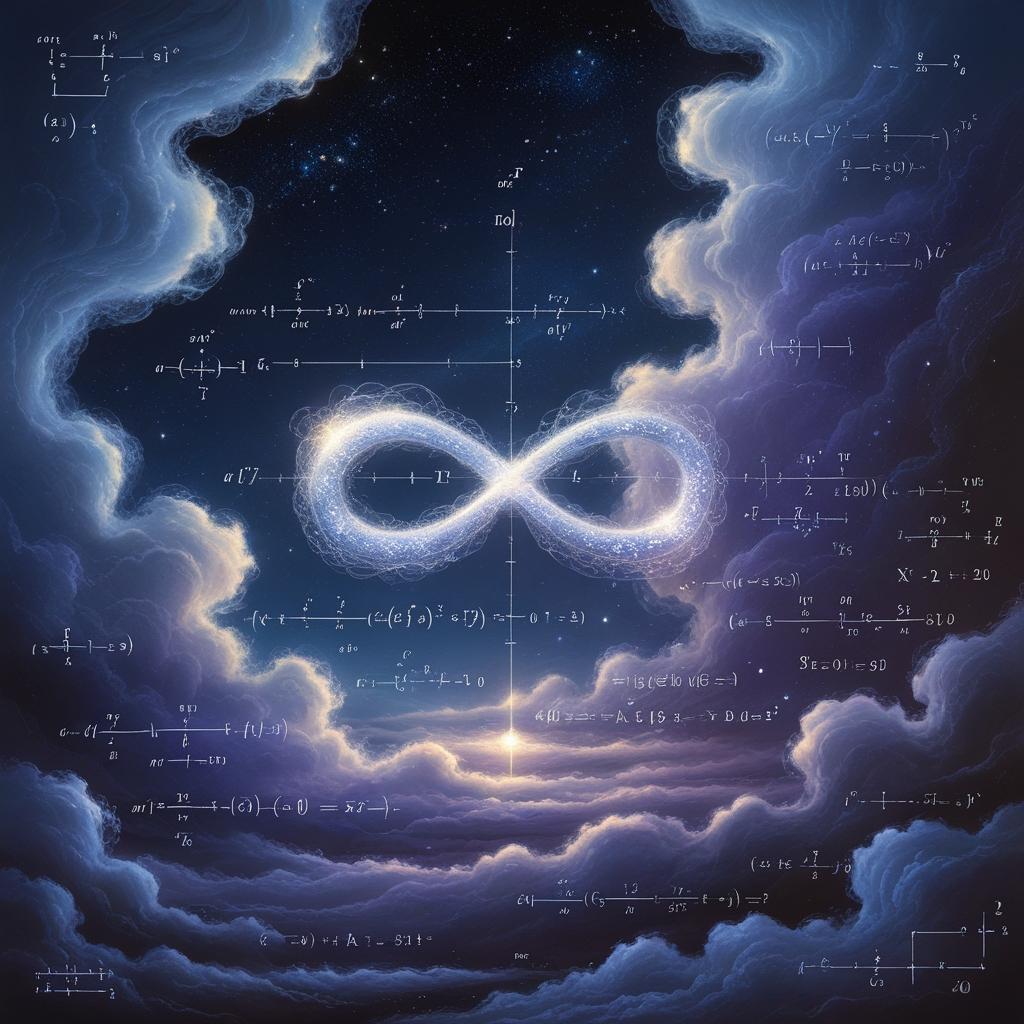Infinity is one of the most profound and abstract concepts in mathematics, representing an idea that is beyond the limits of finite understanding. Unlike ordinary numbers, infinity defies precise quantification, and its exploration has led to some of the most groundbreaking developments in mathematics. From ancient philosophical musings to modern mathematical theories, infinity has captivated the human imagination, challenging perceptions of space, time, and reality. This essay delves into the mathematics of infinity, exploring its history, types, applications, and philosophical implications.
---
Historical Evolution of Infinity
The concept of infinity dates back to ancient civilizations. Early Greek philosophers, such as Zeno of Elea, grappled with paradoxes involving infinity. Zeno's famous paradoxes, such as the Achilles and the Tortoise or the Dichotomy Paradox, questioned the nature of motion and divisibility, hinting at the infinite divisibility of space and time.
Aristotle, however, differentiated between potential infinity (a process that can continue indefinitely) and actual infinity (a completed infinite quantity). He rejected the latter, as it conflicted with his finite understanding of the universe. This distinction influenced mathematical thinking for centuries, until the advent of modern mathematical rigor in the 19th century.
The Renaissance period saw infinity explored in art and science, as exemplified by Galileo's observations of infinite sets and their paradoxes. For instance, Galileo noted that while there are infinitely many natural numbers and infinitely many square numbers, not every natural number is a square number. Yet, they can still be put into a one-to-one correspondence.
In the late 19th century, Georg Cantor revolutionized the understanding of infinity by introducing set theory. Cantor formalized the concept of different sizes of infinity and demonstrated that not all infinities are equal. His groundbreaking work remains the foundation of modern mathematical exploration of infinity.
---
Types of Infinity
One of Cantor’s most significant contributions was the distinction between countable and uncountable infinities, a realization that shattered the traditional view of infinity as a single entity.
1. Countable Infinity:
A set is countably infinite if its elements can be put into a one-to-one correspondence with the natural numbers (e.g., 1, 2, 3, ...). Examples include the set of integers, rational numbers, and even algebraic numbers. Despite their infinite size, these sets can be "counted" in a theoretical sense.
2. Uncountable Infinity:
Uncountable infinity refers to sets that are so vast that they cannot be matched with the natural numbers. Cantor demonstrated this using his famous diagonalization argument, proving that the set of real numbers is uncountably infinite. This discovery revealed that there are infinities larger than others, a concept that was both revolutionary and controversial in Cantor’s time.
3. Transfinite Numbers:
Cantor introduced transfinite numbers to measure the sizes of infinite sets. The smallest transfinite number, (aleph-null), represents the size of the set of natural numbers. Larger infinities, such as , describe the cardinality of uncountable sets like the real numbers. Cantor's work extended the idea of arithmetic to infinity, enabling operations like addition and multiplication on transfinite numbers.
---
Infinity in Calculus and Analysis
Infinity plays a central role in calculus, particularly in the study of limits, sequences, and series. The concept of approaching infinity or infinitesimals (infinitely small quantities) is foundational to calculus, enabling the precise calculation of rates of change and areas under curves.
1. Limits and Asymptotes:
Limits formalize the idea of approaching a value without necessarily reaching it. For instance, as approaches infinity, functions like approach zero, demonstrating how infinity governs behavior in mathematical functions.
2. Infinite Series:
Infinite series, such as the geometric series or the harmonic series, highlight how infinity interacts with summation. Some series converge to finite values, while others diverge to infinity, providing valuable insights into mathematical convergence and divergence.
3. The Infinite in Fractals:
Fractals, such as the Mandelbrot set, exemplify the infinite complexity of mathematical structures. Fractals are self-similar patterns that repeat at every scale, demonstrating how infinite processes can produce intricate, bounded geometries.
---
Applications of Infinity in Modern Mathematics
Infinity underpins many areas of modern mathematics and its applications in the real world.
1. Set Theory and Logic:
Set theory, developed by Cantor, forms the basis of modern mathematics. Concepts like infinite sets and their cardinalities are essential in understanding mathematical logic and structures. For instance, the Continuum Hypothesis, which explores whether there is an infinity between the sizes of the integers and the real numbers, remains one of the most famous unresolved problems in mathematics.
2. Physics and Cosmology:
Infinity appears frequently in physics and cosmology, from the concept of an infinite universe to the singularities in black holes. The mathematical tools used to study infinity help physicists understand the behavior of the cosmos, including theories about space-time and the Big Bang.
3. Computer Science:
Infinity also plays a role in computer science, particularly in algorithms and computational theory. The concept of infinite loops, undecidability (as in the Halting Problem), and infinite state spaces are vital in understanding the limitations and capabilities of computation.
---
Philosophical Implications of Infinity
Infinity raises profound philosophical questions about the nature of reality, existence, and human comprehension.
1. Paradoxes of Infinity:
Paradoxes, such as Hilbert's Hotel, illustrate the counterintuitive properties of infinity. Hilbert’s Hotel describes a fully occupied hotel with infinitely many rooms that can still accommodate more guests by rearranging existing occupants. Such paradoxes challenge our intuition and highlight the complexities of infinite sets.
2. Infinity and Reality:
Philosophers and scientists debate whether infinity exists in the physical world or is merely a mathematical abstraction. While infinity is a powerful tool for describing phenomena, its actual existence remains an open question.
3. Ethical and Theological Perspectives:
The concept of infinity has also influenced theology, where it is often associated with the divine or eternal. Philosophers such as Blaise Pascal used infinity to argue for the existence of God, as seen in Pascal’s Wager. The infinite has long been a symbol of the boundless and the transcendent.
---
Challenges and Future Directions
Infinity continues to pose challenges in mathematics. The search for a deeper understanding of infinity, such as resolving the Continuum Hypothesis, remains an active area of research. Moreover, the integration of infinity with other mathematical fields, such as category theory and quantum mechanics, promises to uncover new insights and applications.
---
Conclusion
The mathematics of infinity transcends the boundaries of numbers, encompassing ideas that challenge human intuition and redefine our understanding of reality. From ancient philosophical paradoxes to modern mathematical theories, infinity has shaped the way we perceive the universe. Its applications in calculus, set theory, physics, and computer science demonstrate its profound significance, while its philosophical implications provoke deeper questions about existence and the infinite potential of human thought. Infinity is not merely a concept—it is a testament to the boundless nature of mathematics itself.

